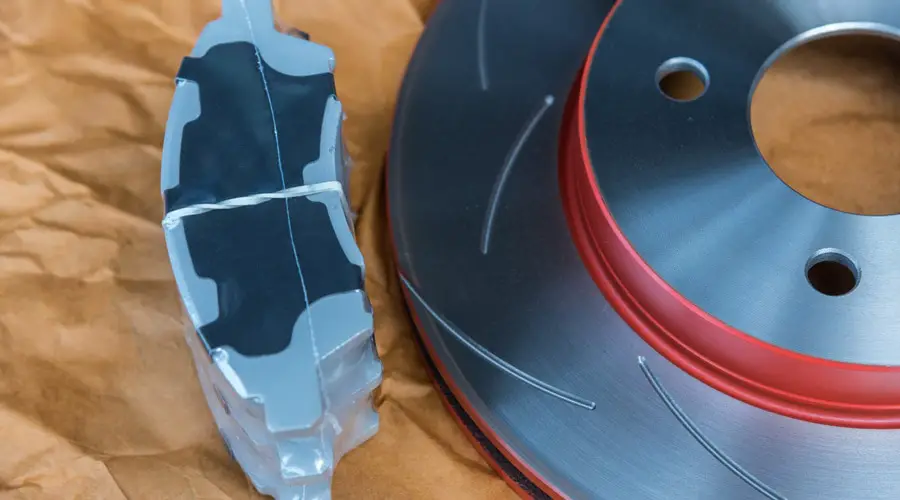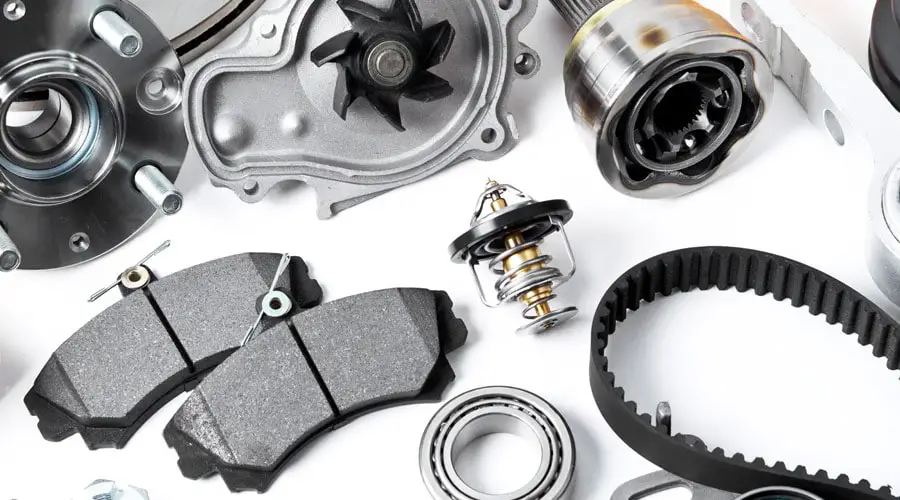
The braking system of your car is one of the most crucial safety features it has. It keeps those in the vehicle and everyone else on the road safe. Using quality products when repairing or replacing brake parts is important as there is a big difference between low end and high end.
When you need work done on your brakes, you might be wondering how much brake pads cost since they are usually the part that needs service most often. Generally, they come in at around $150 per axle, though the range can go anywhere from $100-$300 depending on the parts and make of the vehicle.
Replacing your brake pads is critical if you notice any warning signs, like if your start hearing noises coming from the brakes or if it is becoming hard to stop your car. Good brake pads make the car safe to drive and help the brake rotors last longer. Repair both sides of the car brake pads at the same time so the brake system is balanced and wears with some uniformity. You don’t want to have uneven brake pad wear.
Brake Pads
If you need to change your brake pads, it helps to know what they are and how they work so you choose the best type for your car. The brake pads are one of the three main parts of disk brakes. The other parts are the calipers and rotors. The brake system is what slows down the rotation of the wheels on the vehicle. This happens when friction is created by the two brake pads pushing against the sides of the brake’s rotor with the calipers.

The brake pads are manufactured out of a material that allows for friction. It could be composite, ceramic, organic, or metal with a steel plate on the back. The rotors that they work in conjunction with can be made of various materials as well. The rotors are attached to the wheel or axle. When you use the brake pedal, the fluid in the lines makes a piston push the brake pads onto a rotor.
Knowing how brake pads work also helps you know when the need replaced. Brake pad manufacturers say that semi-metallic ones should last up to 70,000 miles but that number can vary depending on the vehicle type, how you drive, and how the brakes are used. If you are driving with lots of stop and go, this is harder on the brake pads when compared to highway driving where you go long amounts of time without braking at all.
If you suspect your pads need to be replaced, remove the tires and look at the pads themselves. If they’re less than 3mm thick, you need to seriously consider replacing them. There are ways you will know this beyond a visual inspection. You may hear a brake noise or squealing sound. Brake pads have a tiny tab that has been created out of soft metal under the brake pad material that creates a loud squeal when exposed from wear. You may also see a light on the dash that warns of thinness as well. In either case, you will need to buy new brake pads and get them installed.
Driving Habits
Another way to determine how long your brake pads will last before they need replacing is what’s involved in the wear and tear. This affects their mileage. One of the factors is how good they are. If the pads are high quality, they tend to last longer. The material affects how long they last as well. Organic brake pads have the shortest stopping distance and they don’t last long because they use a lot of material every stop. On the other hand, ceramic and semi-metallic brake pads last a long time but do not have the short stopping distance that organic brake pads do.

Driving habits also contributes to brake pad wear along with how you brake, for example, if you’re heavy on the brakes and shortstops versus having a lighter touch over a longer distance, brake pad wear will be different. Geography can be a factor, too, as hills are hard on the brakes in general. Heavier and sporty style cars also use their brake pads quicker than lighter cars. Fast driving and frequent stops also increase wear as will automatic transmissions. If you have a manual car, this is better as you can downshift to save on braking.
Read more about brakes with these guides:
- When To Replace Brake Pads
- Brake Pads Cost
- Different Types Of Brake Pads
- Average Lifetime Of Brake Rotors
- Difference Between DOT 3, DOT 4, And DOT 5.1 Brake Fluid
Brake Pad Cost Factors
Various factors go into which brake pad you should choose and how much you’ll pay. The year, make, and model of the vehicle play into the price of the pads and often affect the charge for installation as well. If your vehicle is imported or high-end, the costs will be higher. Other factors that affect brake pad prices are the quality and materials they are made of. Higher quality means a higher price. Top-of-the-line ceramic pads for a luxury vehicle like an Audi will cost a lot more than semi-metallic pads for a small compact car like a Corolla. Do some research on various brands and whether it is worth buying parts on your own to have installed by a professional. Sometimes, this can save money as you avoid the mark-up cost. It’s worth looking into as it can save a lot of money in the long run.
In conjunction with the brake pad costs, the price of labor plays into the cost of brake pad repair. This hinges on whether the job is going to be done at a dealership, a service center chain, an independent mechanic, or if you are going to do it yourself. If you are going to a shop, the labor cost ranges anywhere from $60 to $100 an hour. Doing it on your own is obviously cheaper but you need tools and have to devote the time to do the work. The job should take between one and two hours for each axle and can go up to three hours if it is a complicated job. This can become somewhat costly if you need to do both the front and rear brakes. Getting the brake pads done is not cheap but it can save a lot of hassle for those who do not have the skills or tools.